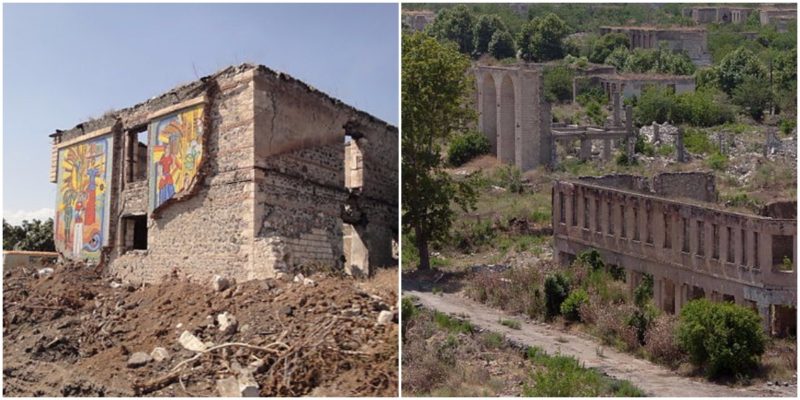The primordial savageries that happened during wars, and unfortunately are still happening, have ended many happy stories. Human lives, prosperous cities, rich regions and entire nations have been lost forever because of the incapacity of the leaders to see that war isn’t a solution.
Once filled with joy and happiness, the regions which entered in the strategic book of some generals and were chosen to be core of the war actions, literally, in a blink of an eye have become dust, ashes, and ruins.
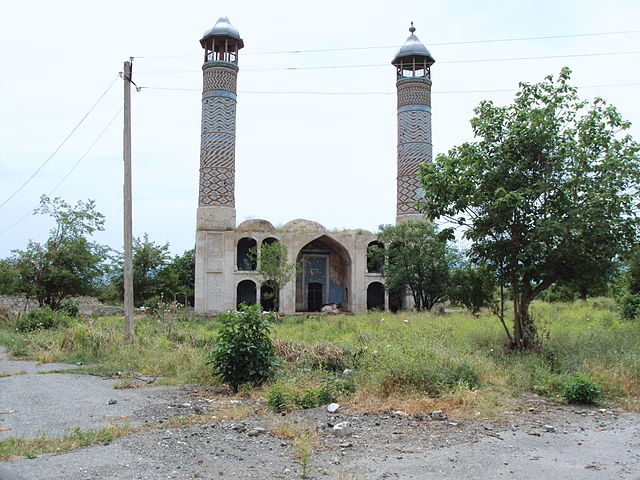
And after the devastating war, when peace is signed between the enemy sides, they may continue to be dust, ashes and ruins, because the surviving citizens don’t want to come back. Aghdam once was flourishing community, but today it is only a haunting ghost town. Everyone who has seen the ruins of the current landscape of Aghdam without doubt could say that it is an unofficial monument of the horrors of the war. Today Aghdam is also believed to be the largest ghost town in the world.
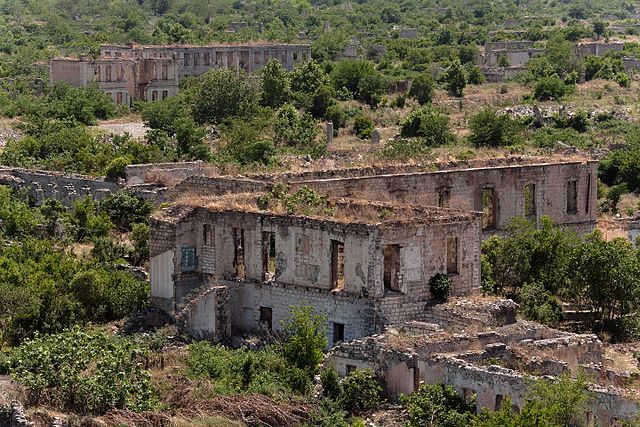
After the fall of the Berlin Wall in November 1989 and the end of the Cold War, the nations of East Europe went through drastic socioeconomic changes. Communism in Europe reached its death hour and like a domino effect, state after state in East and Southeast Europe collapsed violently. The huge Empire of the Soviet Union collapsed quickly like a house of cards too. Aghdam was only collateral damage of this awful autumn fall.
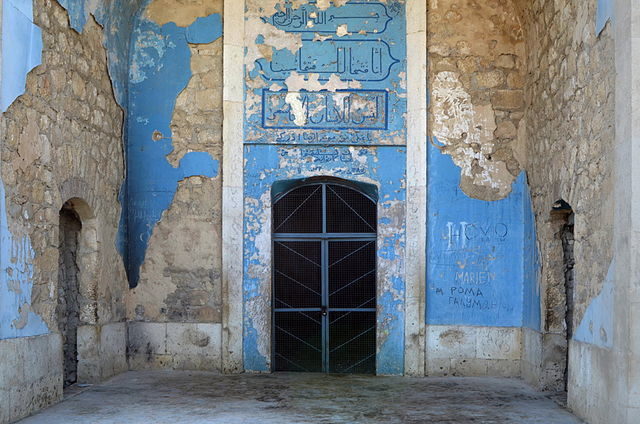
The story of Aghdam begins at the end of 18th century, when the first houses at the place were constructed. It was officially declared a city in 1828. The main preoccupation of its citizens was farming.
They produced wine and butter, but there were also a few factories that made machines for the huge market of the USSR. These businesses quite successfully pushed forward the local economy. At its heyday Aghdam was home to more than 100,000 citizens.
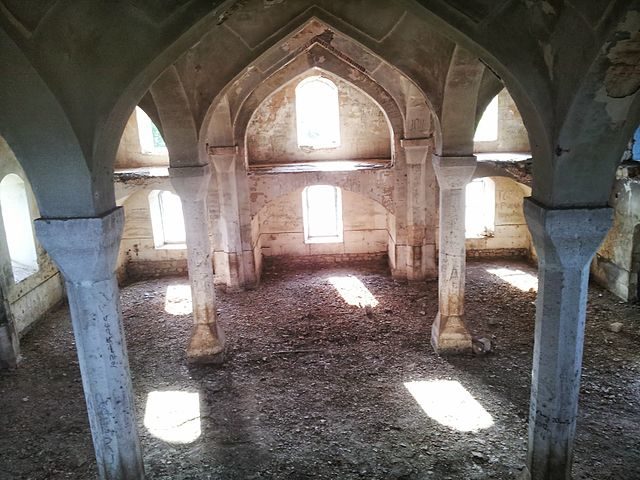
The region, where now the immense ruins of Aghdam are placed, wasn’t strategically important until 1993. That year the Armenians in Azerbaijan declared independence and an autonomous region in the state of Azerbaijan was born. The area was populated predominantly with Azerbaijanis, but the Armenian side believed they had a historical right to the area since ancient times. The disagreement led to the violent Nagorno-Karabakh War which totally destroyed the city of Aghdam. Both sides used heavy methods of urban warfare defending their positions and several rules of war were seriously broken.
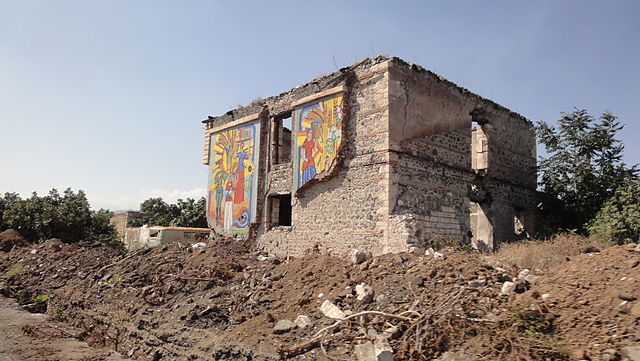
Intense battles happened and a lot of civilians died. Parts of Aghdam were continuously bombarded day and night while the citizens were still hiding in the buildings. Civilians were taken as hostages and used as a human shield, bombs and missiles were thrown everywhere. At first the militarized area was in the hands of the Azerbaijan forces, but after numerous attacks the Armenians captured the city. The surviving citizens escaped to the east parts of Azerbaijan and never returned.
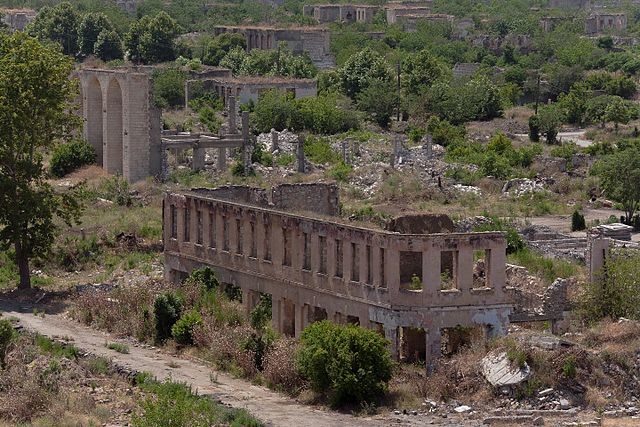
Vast areas of the city were destroyed during the fighting. After taking control, the Armenian forces deliberately demolished many abandoned buildings with additional heavy artillery in order to prevent the eventual return of the former citizens, the majority of whom were Azerbaijani. Now the area is a no man’s land. It is de jure part of Azerbaijan, but de facto it is placed in the unrecognized Republic of Nagorno-Karabach (Republic of Artsakh), controlled by the Armenians. After the proclaiming of a buffer zone, the materials that could be re-used for construction were taken to Stepanakert, the capital of the unrecognized republic.
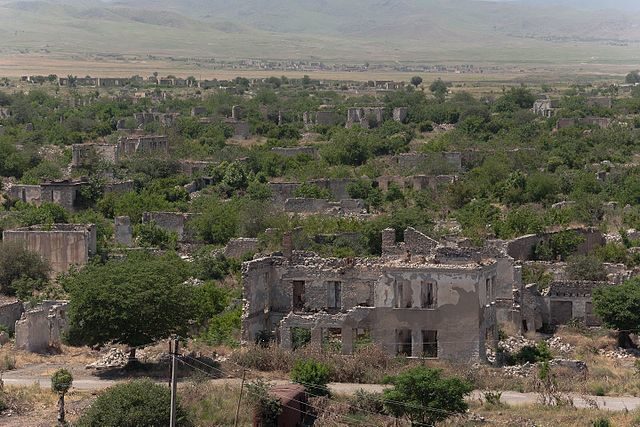
The only structure that was left intact was the city’s mosque. But, because of years of abandonment, it is in a very poor condition. Visiting the deserted city is still illegal, but farmers from the neighboring area (from Armenian side) use some of the ruined structures as a shelter for their cows. The remains are crumbling and nature little by little becomes a sovereign in the silent and deserted city. The crows are also part of the uncomfortable silence that reside in Aghdam.
